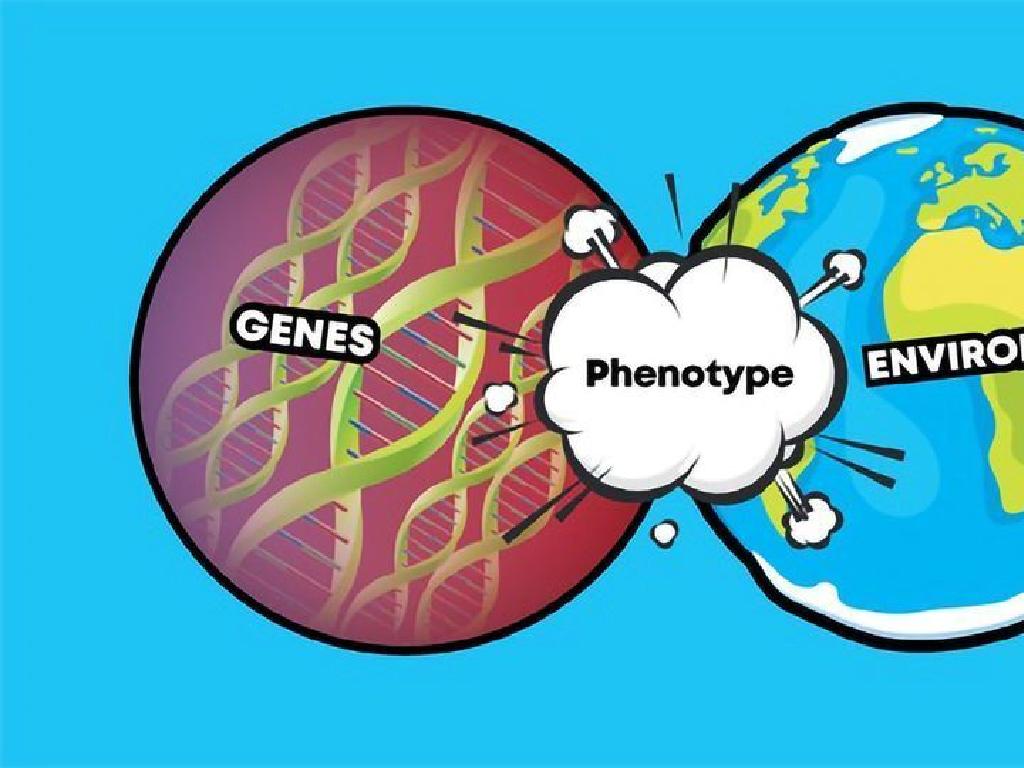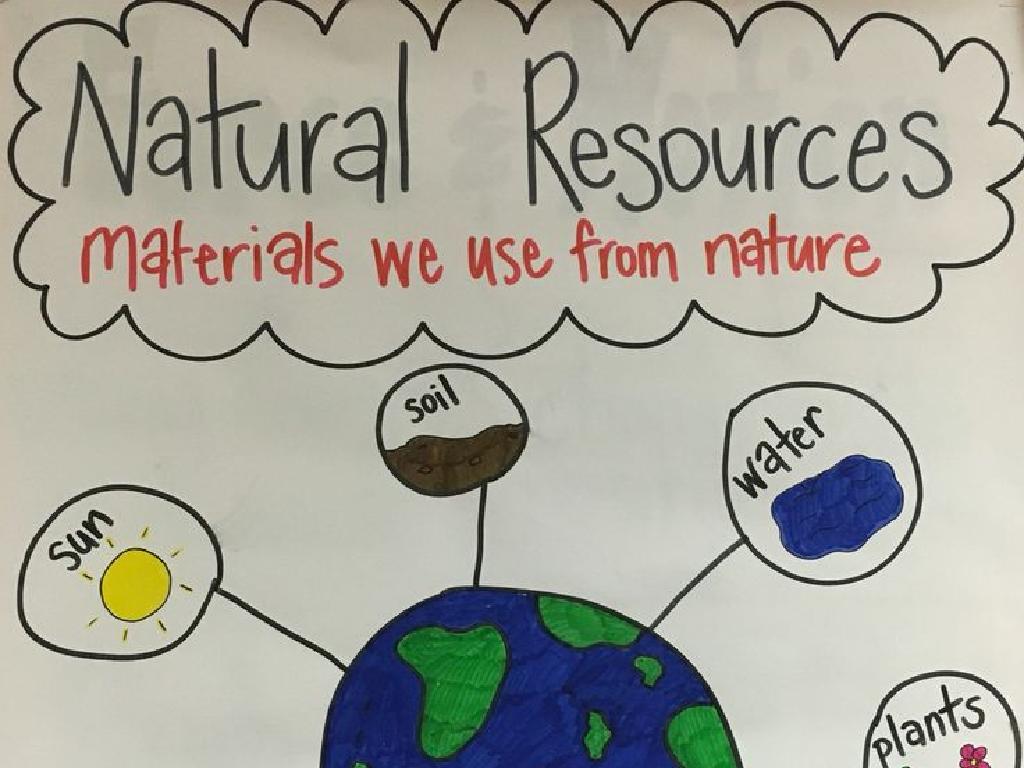Identify Earth'S Land Features Using Satellite Images
Subject: Social studies
Grade: Sixth grade
Topic: Physical Geography
Please LOG IN to download the presentation. Access is available to registered users only.
View More Content
Exploring Earth’s Land Features
– What is Physical Geography?
The study of Earth’s natural environments.
– Earth’s diverse land features
Mountains, valleys, plains, and plateaus.
– Using satellite images
Satellites provide a bird’s-eye view of our planet.
– Identifying key landforms
Recognize patterns to spot different landforms.
|
This slide introduces students to the field of physical geography, emphasizing the study of Earth’s natural landscapes and phenomena. Highlight the variety of land features found on Earth, such as mountains, valleys, plains, and plateaus. Explain how satellite images allow us to observe these features from space, giving us a unique perspective that can reveal patterns and characteristics not easily seen from the ground. Encourage students to think like geographers, using satellite images to identify and classify the land features they observe. Provide examples of satellite images and guide students on how to recognize key landforms. This will set the foundation for further exploration and understanding of Earth’s physical geography.
Satellite Images: Earth’s Land Features
– Satellites: Our Eyes in the Sky
– Satellites orbit Earth, capturing images from space.
– Capturing Earth’s Images
– They use cameras & sensors to take pictures of the surface.
– Satellite Images in Geography
– These images help us study Earth’s physical features.
– Exploring Land Features
– We can identify mountains, rivers, forests, and deserts.
|
This slide introduces students to the concept of satellite imagery and its significance in studying physical geography. Satellites act as our eyes in the sky, constantly orbiting and capturing detailed images of the Earth’s surface. Explain how satellites use sophisticated cameras and sensors to take these pictures, which can then be analyzed to understand various land features. Emphasize the importance of satellite images in geography for mapping, environmental monitoring, and disaster management. Encourage students to think about how different land features like mountains and rivers can be identified from space, and how this perspective is valuable for scientists and geographers.
Exploring Earth’s Land Features
– Mountains: Elevated landforms
– Peaks, slopes, and high elevation
– Valleys: Low areas between hills
– Often found between mountains
– Plains: Wide areas of flat land
– Expansive flatlands, often fertile
– Recognizing features: Shape, size, location
– Use clues like shadows and terrain patterns
|
This slide introduces students to the basic types of land features visible on Earth’s surface using satellite images. Mountains are characterized by their elevation and sloping sides, valleys are lower areas often nestled between hills or mountains, and plains are large stretches of flat land. When identifying these features from satellite images, students should look for specific characteristics such as shape, size, and location relative to other geographical features. Encourage students to observe the way shadows fall on mountains or how valleys appear as depressions between elevated areas. Provide examples of each land feature from different parts of the world to illustrate the diversity of Earth’s geography. This will help students understand the physical characteristics that define each type of land feature.
Reading Satellite Images: Earth’s Land Features
– Interpreting colors and patterns
– Colors can indicate vegetation, water bodies, and urban areas.
– Identifying mountains, rivers, deserts
– Look for shapes: mountains are rugged, rivers are winding, deserts are vast and barren.
– Activity: Guess the Feature!
– Use clues from images to guess land features.
|
This slide introduces students to the basics of interpreting satellite images in the context of physical geography. Students will learn how to use color patterns to distinguish between different types of terrain and natural formations. For example, green often represents vegetation, blue indicates water, and light brown or beige may denote desert regions. The activity ‘Guess the Feature!’ is designed to engage students in applying their knowledge by guessing different land features based on satellite images provided. Teachers should prepare several images of distinct geographical features for the activity and guide students through the process of deduction and reasoning based on visual clues. Possible activities could include matching features to their names, describing the features seen in an image, or drawing a simple map based on an image.
Satellite Images in Action: Studying Earth’s Geography
– Real-world uses of satellite imagery
– Disaster management, urban planning, and agriculture
– Geographers’ tools for Earth study
– Analyzing landforms, vegetation, and urban development
– Case study on environmental monitoring
– Tracking deforestation or glacial retreat over time
– Impact of satellite data on geography
|
This slide aims to illustrate the practical applications of satellite imagery in various fields such as disaster management, urban planning, and agriculture. It also highlights how geographers utilize these images as essential tools to analyze physical landforms, patterns of vegetation, and urban development. The case study on environmental monitoring will focus on how satellite data can be used to observe and track significant environmental changes, such as deforestation or the retreat of glaciers, providing critical information for conservation efforts. Encourage students to think about how satellite images can provide a unique perspective on Earth’s geography and the dynamic changes occurring on our planet.
Class Activity: Identify That Land Feature!
– Pair up and analyze satellite images
– Identify various land features
– Present a land feature to the class
– Share the feature’s name, appearance, and any unique traits
– Reflect on satellite imagery benefits
– Discuss how these images reveal Earth’s beauty and diversity
|
This interactive class activity is designed to engage students with real-world applications of physical geography using satellite imagery. Students will work in pairs to foster collaboration and communication skills. Provide a diverse set of satellite images to ensure a wide range of land features can be identified. After the identification process, each pair will choose one land feature to present to the class, describing its visual characteristics and any interesting facts. Conclude the activity with a reflection on how satellite images offer a unique perspective on Earth’s geography, enhancing our appreciation for the planet’s natural beauty and the importance of geographic diversity. Prepare to facilitate the discussion and offer guidance on interpreting satellite images. Possible activities: identifying mountains, rivers, canyons, deltas, or forests.





